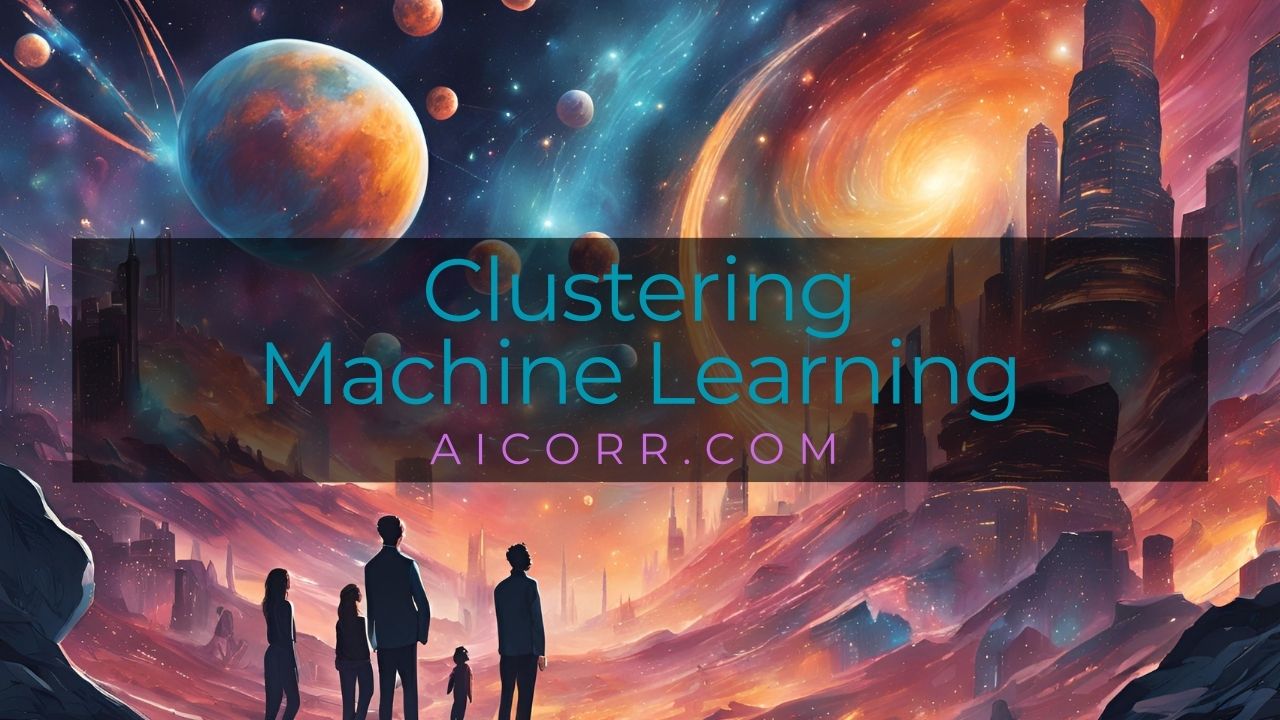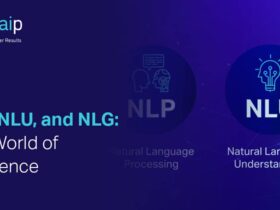If you want to learn about what is clustering in machine learning, this is the right place for you. We examine a thorough overview of the definition of clustering.
Table of Contents:
In data science and machine learning, clustering plays a pivotal role in uncovering hidden patterns and grouping data without prior labels. As an unsupervised learning technique, clustering is widely used in applications ranging from customer segmentation and market research to image compression and anomaly detection. This article explores the fundamental concepts, types of clustering algorithms, evaluation techniques, and practical applications.
What is Clustering in Machine Learning?
Clustering is the task of grouping a set of objects or data points into clusters based on their similarities. Unlike supervised learning methods, clustering algorithms do not rely on labeled datasets. Instead, they seek to identify inherent structures within the data by forming groups where points in the same cluster exhibit similar characteristics.
At its core, clustering seeks to minimise intra-cluster distances (the distances between points within the same cluster) while maximising inter-cluster distances (the distances between points in different clusters).
A good clustering solution achieves high intra-cluster similarity (data points within a cluster are similar) and low inter-cluster similarity (data points in different clusters are dissimilar).
Types of Clustering Algorithms
There are various clustering techniques, each suited for different types of data and problem domains. There are different clustering algorithms that fall into different groups. Some popular groups are partitioning clustering, hierarchical clustering, density-based clustering, model-based clustering, and grid-based clustering.
K-means
One of the most popular and well-known clustering algorithms is k-means. The k-means algorithm partitions the data into a predetermined number of clusters, k. It begins by randomly selecting k initial centroids, which are points that represent the center of each cluster. Data points are then assigned to the nearest centroid based on a distance metric, typically Euclidean distance. After all points have been assigned, the centroids are updated by calculating the mean of the points in each cluster. This process of assignment and centroid updating continues iteratively until the centroids stabilise or a predefined number of iterations is reached. Despite its simplicity and efficiency, k-means has some limitations, such as its sensitivity to the initial placement of centroids and its tendency to converge to local optima.
Hierarchical clustering
Another widely used clustering algorithm is hierarchical clustering. Unlike k-means, hierarchical clustering does not require the number of clusters to be specified beforehand. Instead, it creates a dendrogram, a tree-like structure that illustrates the relationships between data points and clusters at various levels of granularity. Hierarchical clustering can be performed in two ways: agglomerative and divisive. Agglomerative clustering is a bottom-up approach where each data point starts as its own cluster, and clusters are merged iteratively based on their similarity. Divisive clustering, on the other hand, is a top-down approach that begins with all data points in a single cluster and splits them recursively. One advantage of hierarchical clustering is its interpretability, as the dendrogram provides a visual representation of the clustering process.
Density-based clustering
Density-based clustering is another category of algorithms that is particularly effective for discovering clusters of arbitrary shapes and handling noise in the data. A prominent example is the DBSCAN (Density-Based Spatial Clustering of Applications with Noise) algorithm. DBSCAN groups data points that are closely packed together and marks points that lie in low-density regions as outliers. It requires two parameters: epsilon (the maximum distance between two points to be considered neighbors) and the minimum number of points required to form a dense region. One of the key strengths of DBSCAN is its ability to identify clusters of varying shapes without requiring the number of clusters to be specified in advance.
Gaussian mixture models (GMMs)
In addition to these traditional clustering methods, modern machine learning techniques have introduced more sophisticated approaches. For example, Gaussian Mixture Models (GMM) represent clusters as mixtures of Gaussian distributions, allowing for a probabilistic approach to clustering. Unlike k-means, which assigns each point to a single cluster, GMM calculates the probability of each point belonging to different clusters. This flexibility makes GMM well-suited for capturing more complex cluster structures.
Spectral clustering
Another advanced technique is spectral clustering, which leverages graph theory and the eigenvalues of similarity matrices to perform clustering. Spectral clustering is particularly useful for data with non-convex clusters or complex relationships that are not well-captured by distance-based methods. The algorithm begins by constructing a similarity graph from the data and then computes the Laplacian matrix. By finding the eigenvectors of this matrix, spectral clustering transforms the data into a lower-dimensional space where traditional clustering algorithms, such as k-means, can be applied.
How Clustering Algorithms Work
To illustrate the steps common in clustering algorithms, consider the example of K-means. There are 4 steps.
- Initialisation: Choose K initial centroids randomly.
- Assignment: Assign each data point to the nearest centroid.
- Update: Calculate new centroids by averaging the data points in each cluster.
- Iteration: Repeat the assignment and update steps until centroids no longer change significantly or a maximum number of iterations is reached.

Evaluating Clustering Performance
Since clustering is unsupervised, evaluating its effectiveness is challenging. However, several metrics can assess the quality of clustering results. Let’s briefly explore some of them below.
1. Internal Evaluation Metrics
These metrics rely solely on the data and clustering results:
- Silhouette Score measures how similar a point is to its own cluster compared to other clusters. Higher values indicate better clustering.
- Dunn Index measures the ratio between the minimum inter-cluster distance and the maximum intra-cluster distance.
2. External Evaluation Metrics
These metrics require ground truth labels:
- Rand Index measures the agreement between predicted and true cluster assignments.
- Adjusted Rand Index (ARI) corrects the Rand Index for chance grouping.
3. Relative Evaluation
Comparing different clustering models or hyperparameters to identify the best solution.
Challenges and Considerations
Despite its widespread utility, clustering is not without challenges. One of the primary difficulties is determining the optimal number of clusters. While some algorithms, like hierarchical clustering and DBSCAN, can infer the number of clusters from the data, others, such as k-means, require this parameter to be specified upfront. Various methods have been proposed to address this issue, including the elbow method, silhouette analysis, and gap statistics. These techniques provide quantitative measures to assess the quality of clustering and guide the selection of the appropriate number of clusters.
Another challenge is the handling of high-dimensional data. As the number of dimensions increases, the concept of distance becomes less meaningful, a phenomenon known as the curse of dimensionality. Dimensionality reduction techniques, such as Principal Component Analysis (PCA) and t-Distributed Stochastic Neighbor Embedding (t-SNE), can be employed to project high-dimensional data into lower-dimensional spaces while preserving important relationships between points.
The choice of distance metric also plays a crucial role in clustering. While Euclidean distance is commonly used, it may not be suitable for all types of data. For categorical data, metrics such as Hamming distance or Jaccard similarity are more appropriate. Selecting the right distance metric can significantly impact the performance and effectiveness of a clustering algorithm.
Furthermore, clustering is sensitive to noise and outliers, which can distort the formation of clusters and lead to suboptimal results. Robust clustering algorithms, such as DBSCAN and outlier detection techniques, can help mitigate this issue. Preprocessing steps, including data cleaning and normalisation, also play a vital role in improving clustering outcomes.
Common challenges of Clustering
- Choosing the Right Algorithm: Different algorithms excel in different scenarios. For example, K-means struggles with non-convex clusters, while DBSCAN handles them well.
- Determining the Number of Clusters: Methods like the elbow method and silhouette analysis can help identify the optimal number of clusters.
- Handling High-Dimensional Data: Techniques like Principal Component Analysis (PCA) can reduce dimensionality and improve clustering performance.
- Scalability: Efficient algorithms and optimisations are crucial for large datasets.
Applications of Clustering
Clustering has numerous real-world applications across various industries. In marketing, it is used for customer segmentation, where customers are grouped based on their purchasing behavior, demographics, or preferences. This enables companies to tailor marketing strategies and offers to different customer segments, thereby improving customer engagement and sales. In healthcare, clustering can help identify patterns in patient data, leading to better disease diagnosis and personalised treatment plans. For example, clustering algorithms have been used to group patients with similar symptoms or responses to treatments.
In the field of image and video analysis, clustering plays a crucial role in object recognition, image segmentation, and content-based retrieval. By grouping similar pixels or features, clustering algorithms can efficiently segment images and identify objects within them. In cybersecurity, clustering is employed for anomaly detection, where unusual patterns in network traffic or user behavior are flagged as potential security threats. This proactive approach helps organisations identify and mitigate cyberattacks before they cause significant damage.
Tools and Libraries for Clustering
Popular tools and libraries for clustering in Python.
- scikit-learn: Provides implementations for K-means, DBSCAN, hierarchical clustering, and more.
- SciPy: Useful for hierarchical clustering.
- HDBSCAN: An advanced density-based clustering library.
- TensorFlow and PyTorch: For implementing custom clustering models in deep learning applications.
The Bottom Line
So, what is clustering in machine learning in a nutshell? Clustering is a powerful and versatile tool for exploring and analysing data. Its ability to uncover hidden patterns and relationships makes it invaluable in a wide range of applications, from marketing and healthcare to image analysis and cybersecurity. As data continues to grow in complexity and volume, the development of more sophisticated clustering algorithms and techniques will be essential for harnessing the full potential of data-driven insights. By understanding the strengths and limitations of different clustering methods and addressing the associated challenges, data scientists and researchers can make informed decisions and achieve meaningful results in their analyses. We hope that if you were looking to find out what is clustering in machine learning, you found it here!












